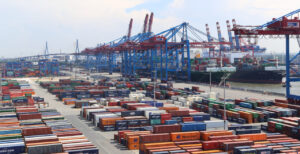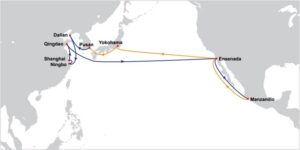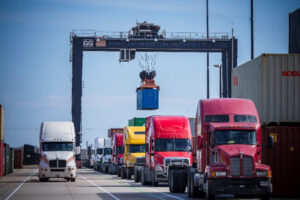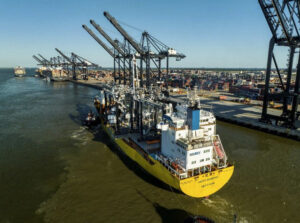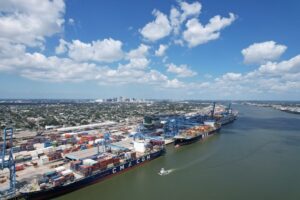Forward-planning on building data information flows along congested coastal shipping lines could be a key factor in enhancing supply chain performance, argue experts in the shipping sector.
Further improvements can be made to data exchange between ships and its scheduled ports, benefitting ports along the route and its mix of stakeholders.
Enhanced data flows can particularly show benefits in congested shipping areas where a vessel is stopping at many points on a route.
“The Port is a nodal point. We must remember that as its primary purpose: we’re a transfer point from one node to the next,” Stephen Edwards, CEO and Director at the Virginia Port Authority (VPA), told a webinar on 26 February.
“At the moment, our shipping line customer provides their inbound information – but if you think about our port, or [ports] in Northern Europe, the time of transit between ports is short.”
Edwards highlighted how vessels vacating New York City can be in Norfolk, VA, just 19 hours later. In Europe, the journey time from Rotterdam to Hamburg, for example, is exceptionally short.
For port operators, Edwards said the challenge then becomes how to proactively get logistical information onto the next port before the vessel vacates your own port.
“That’s not competitive information, it’s operational information,” said Edwards. “It does require an acknowledgement that, in those close port ranges, just passing that information as you leave the port doesn’t really give the next person any advantage whatsoever.
“But seeing those developments as [a vessel] transits through that port really does help, because then your operators take over and can benefit.”
To facilitate a greater information exchange, Edwards said planning at a macro level is pivotal: “It’s down to how you’re planning your pilots, your tugs, your berth schedules, and how you’re planning your yard management. It is all relative to what’s going on just 48 hours ahead of you in another port.”
He added, “Crossing oceans is fine. There is plenty of time for that information to flow. That immediacy of quick coastal schedules, getting that information across in a multi-user environment and aggregating that to what it means to how we manage the supply chain is the secret sauce that we’re all looking for.”
Aggregation and a common data sharing platform will be an important factor in getting information out ahead of time. This will be important not just for scheduled port operators but also wider stakeholders of the port community, said Edwards.
Data-sharing in practice
Nick Chubb, Founder and Managing Director at Thetius, echoed Edwards, commenting, “Your data is not valuable in its own right: what is valuable is the utility of that data. It is only properly utilised when shared with other parties.
Chubb continued that in data management the industry could favour large third-party data aggregators, putting in data from various sources, and then charging a fee.
“I don’t think that’s necessary or what is going to happen,” he said. “Ports are very good at making large infrastructure investments, and then charging a very small amount in unit cost over a very long period of time to get that investment back.
“I see this as being no different. The onus has to go onto the port to build that infrastructure, and build it in a way that is safe, scalable, and secure, but gives everyone the ease of access in the same way you have the physical ease of access through the port.
“There has to be a level of standardisation to make all of this work. It’s a much better leverage of innovation as opposed to using a large aggregator.”
Visible information from stakeholders including freight forwarders, Heavy Goods Vehicles (HGV) facilitators, and federal authorities and customs, can reduce lapses in the supply chain, for example.
Edwards commented that larger cargo owners building direct relationships with common ports along the route has been positive step towards greater data sharing.
“We plan to have a pipeline of at least 10 more at the moment, where we’re data sharing either to them directly, or to their third-party logistics provider,” Edwards said.
“That points to how they see the role of the marine terminal operator: we’re feeding you what’s going on with your cargo and what your options are with your cargo constantly; and they’re feeding it back to us the other way in terms of warehousing strategies.”


